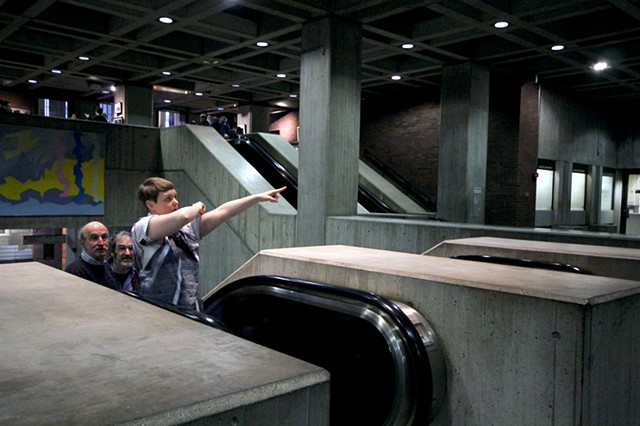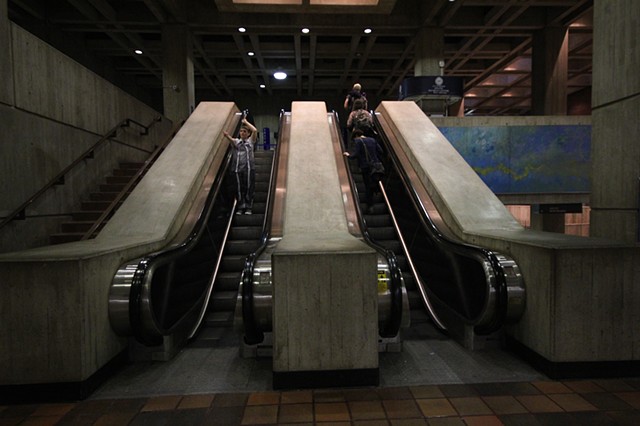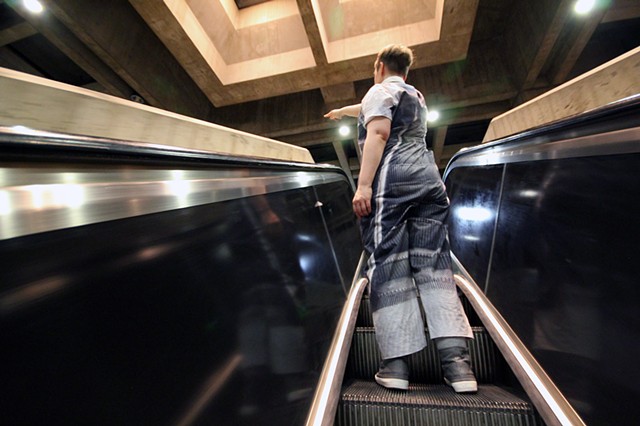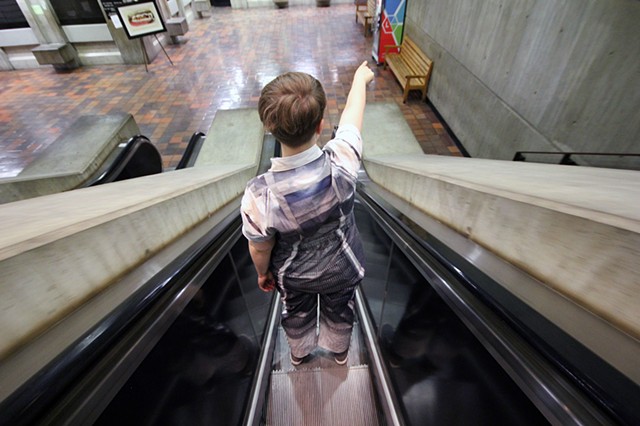ESCALATE/ DE-ESCALATE
Pedestrian movement is the time signature of Boston City Hall. This time signature is upheld throughout the building’s thresholds and transient spaces (revolving doors, security stations, stairways, elevators, escalators, hallways, bathrooms, etc.). The design of these spaces guide visitors and impose expectations of how one moves throughout the building and how much time one spends doing so. What happens when transient space no longer holds the designation of such? What happens when a space created for passing through becomes marked as a destination? Sited on the escalators between the lobby and the lower levels of Boston City Hall, this durative performance explores notions of agreement and challenges ways time is experienced and perceived between bodies sharing space.
ESCALATE/DE-ESCALATE creates an impossible performance condition. Always moving, the performance must simultaneously be viewed from the front, behind, below, side-to-side, and above. This condition de-privileges sight as the primary sense to engage the work and draws attention to subtle auditory, olfactory, and tactile elements present within the space.
Camouflaged in a work suit printed with an image of the escalators that I ride, I count the seconds that it takes me to travel each escalator. At the volume of my own speaking voice, this sound attracts and/or repels witnesses to get close to and/or move away from my performing body. Simultaneously, I point to 3 security cameras that can be seen while riding the escalators, locating myself in relation to a surveillant gaze.
CONCRETE ACTIONS
Mobius
May 25, 2017
Boston City Hall
Boston, MA
photos by Philip Fryer



